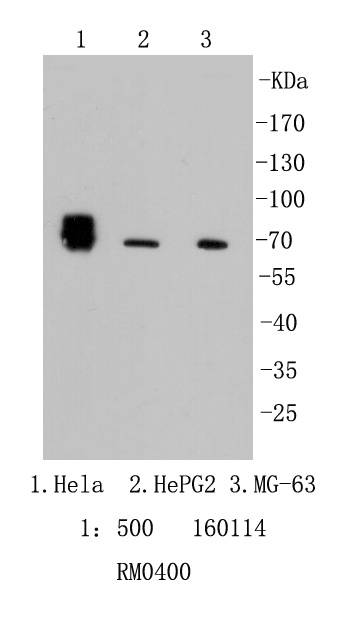
Fig1: Western blot analysis of ALP on different cell lysates using anti-ALP antibody at 1/1,000 dilution. Positive control: Lane 1: Hela Lane 2: HepG2 Lane 3: MG-63
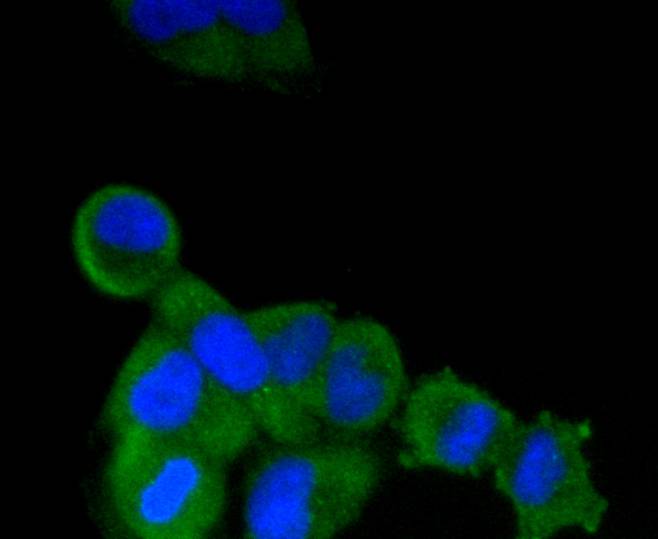
Fig2: ICC staining ALP in Hela cells (green). The nuclear counter stain is DAPI (blue). Cells were fixed in paraformaldehyde, permeabilised with 0.25% Triton X100/PBS.
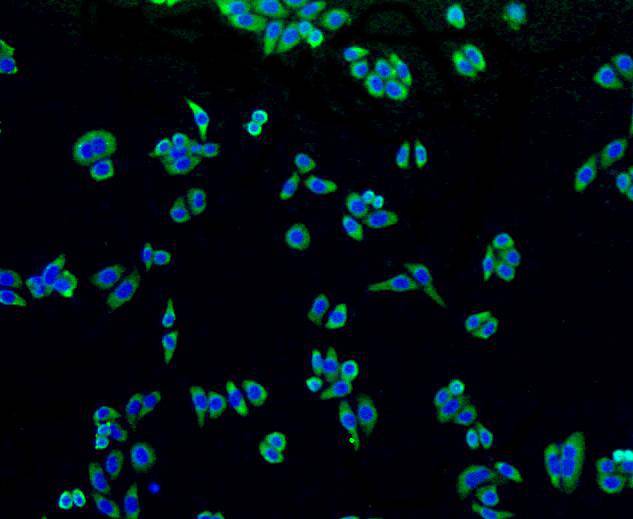
Fig3: ICC staining ALP in HepG2 cells (green). The nuclear counter stain is DAPI (blue). Cells were fixed in paraformaldehyde, permeabilised with 0.25% Triton X100/PBS.
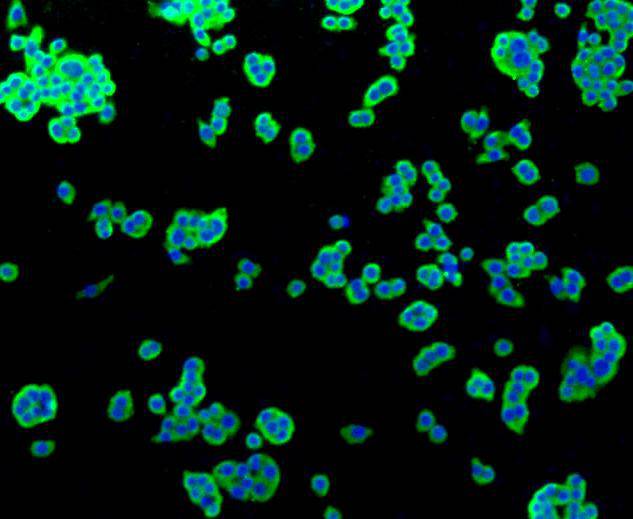
Fig4: ICC staining ALP in SW480 cells (green). Cells were fixed in paraformaldehyde, permeabilised with 0.25% Triton X100/PBS.
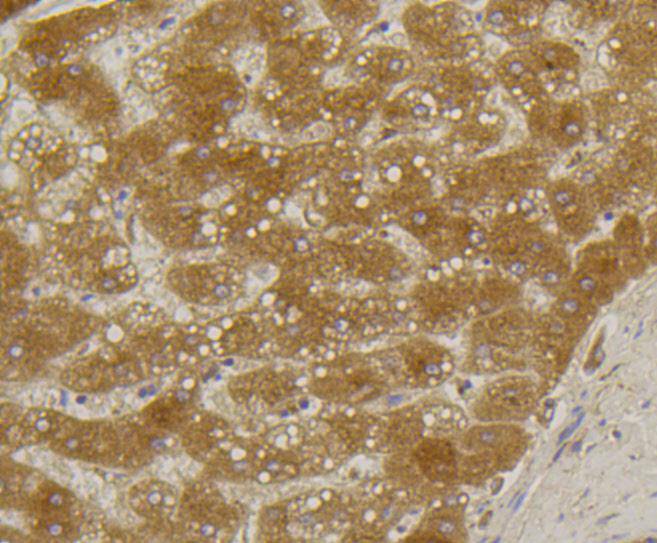
Fig5: Immunohistochemical analysis of paraffin-embedded human liver tissue using anti-ALP antibody. Counter stained with hematoxylin.
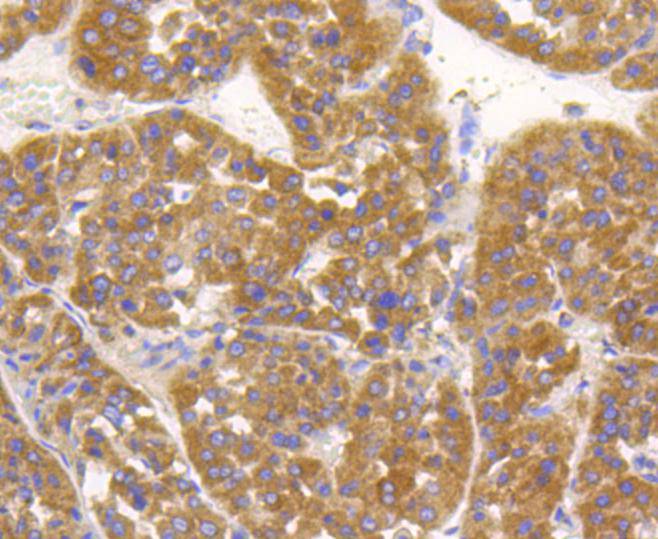
Fig6: Immunohistochemical analysis of paraffin-embedded human liver cancer tissue using anti-ALP antibody. Counter stained with hematoxylin.
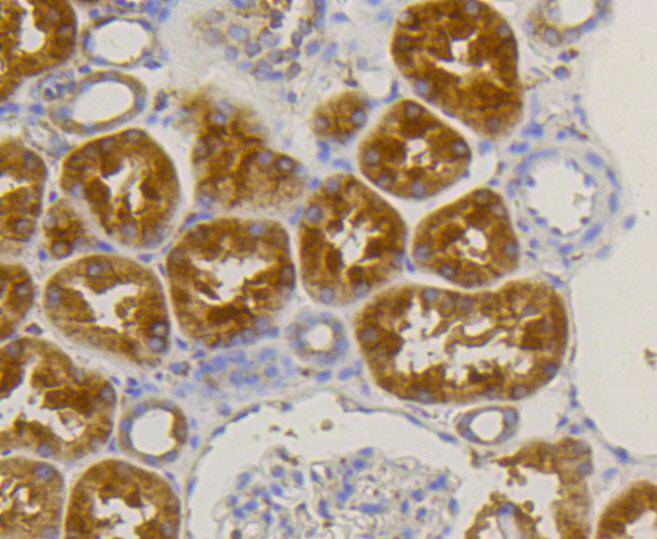
Fig7: Immunohistochemical analysis of paraffin-embedded human kidney tissue using anti-ALP antibody. Counter stained with hematoxylin.
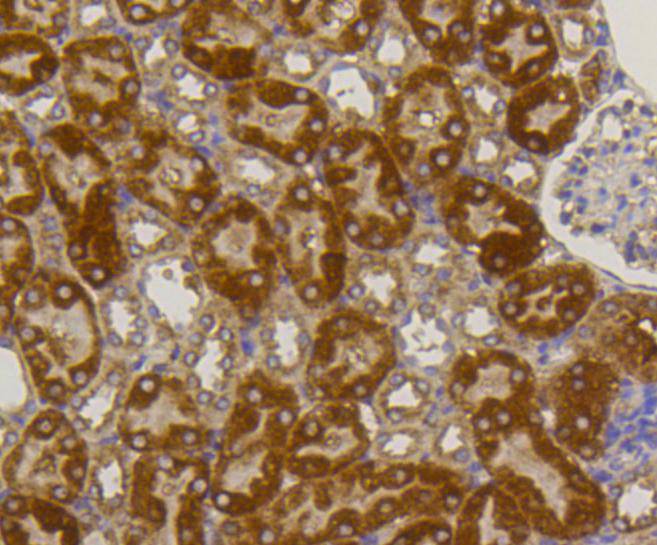
Fig8: Immunohistochemical analysis of paraffin-embedded mouse kidney tissue using anti-ALP antibody. Counter stained with hematoxylin.
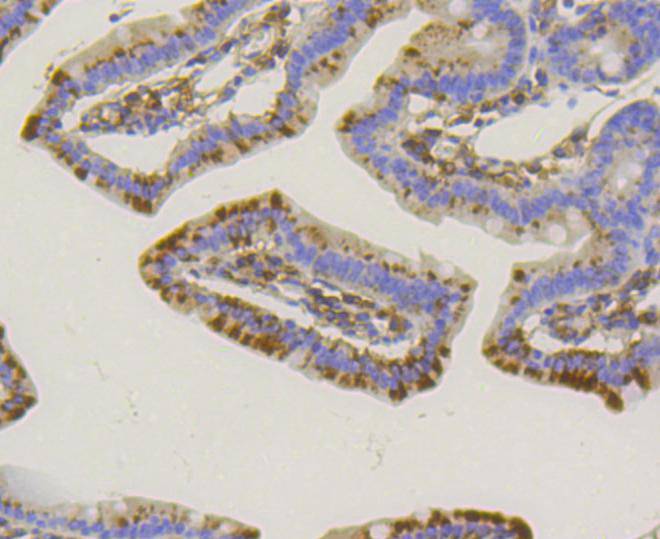
Fig9: Immunohistochemical analysis of paraffin-embedded mouse small intestine tissue using anti-ALP antibody. Counter stained with hematoxylin.
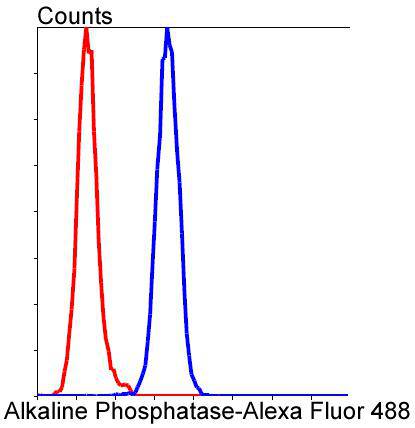
Fig10: Flow cytometric analysis of Hela cells with ALP antibody at 1/50 dilution (blue) compared with an unlabelled control (cells without incubation with primary antibody; red). Alexa Fluor 488-conjugated goat anti rabbit IgG was used as the secondary antibody
Product Profile
| Product Name | Alkaline Phosphatase [SA40-00] |
|---|---|
| Antibody Type | Primary Antibodies |
| Product description |
|
| Immunogen | recombinant protein |
Key Feature
| Clonality | Monoclonal |
|---|---|
| Isotype | IgG |
| Host Species | Recombinant rabbit |
| Tested Applications | |
WB:1:1,000-1:5,000 ICC:1:50-1:200 IHC:1:50-1:200 FC:1:10-1:100 |
|
| Species Reactivity | |
| Concentration | 1 mg/mL. |
Target Information
| Alternative Names | Alkaline phosphatase antibody
Alkaline phosphatase placental antibody
Alkaline phosphatase placental type antibody
Alkaline phosphatase Regan isozyme antibody
ALP antibody
Alp1 antibody
ALPP antibody
FLJ61142 antibody
Germ-cell alkaline phosphatase antibody
nagao isozyme antibody
OTTHUMP00000164354 antibody
PALP antibody
Placental alkaline phosphatase 1 antibody
placental heat-stable alkaline phosphatase antibody
placental type antibody
PLAP antibody
PLAP-1 antibody
PLAP1 antibody
PPB1_HUMAN antibody
|
|---|---|
| Molecular Weight(MW) | 57 kDa |
| Cellular Localization | Cell membrane |
Database Links
| SwissProt ID | P05186 P09242 P08289 |
|---|
Application
-

Application
Fig1: Western blot analysis of ALP on different cell lysates using anti-ALP antibody at 1/1,000 dilution. Positive control: Lane 1: Hela Lane 2: HepG2 Lane 3: MG-63
-

Application
Fig2: ICC staining ALP in Hela cells (green). The nuclear counter stain is DAPI (blue). Cells were fixed in paraformaldehyde, permeabilised with 0.25% Triton X100/PBS.
-

Application
Fig3: ICC staining ALP in HepG2 cells (green). The nuclear counter stain is DAPI (blue). Cells were fixed in paraformaldehyde, permeabilised with 0.25% Triton X100/PBS.
-

Application
Fig4: ICC staining ALP in SW480 cells (green). Cells were fixed in paraformaldehyde, permeabilised with 0.25% Triton X100/PBS.
-

Application
Fig5: Immunohistochemical analysis of paraffin-embedded human liver tissue using anti-ALP antibody. Counter stained with hematoxylin.
-

Application
Fig6: Immunohistochemical analysis of paraffin-embedded human liver cancer tissue using anti-ALP antibody. Counter stained with hematoxylin.
-

Application
Fig7: Immunohistochemical analysis of paraffin-embedded human kidney tissue using anti-ALP antibody. Counter stained with hematoxylin.
-

Application
Fig8: Immunohistochemical analysis of paraffin-embedded mouse kidney tissue using anti-ALP antibody. Counter stained with hematoxylin.
-

Application
Fig9: Immunohistochemical analysis of paraffin-embedded mouse small intestine tissue using anti-ALP antibody. Counter stained with hematoxylin.
-

Application
Fig10: Flow cytometric analysis of Hela cells with ALP antibody at 1/50 dilution (blue) compared with an unlabelled control (cells without incubation with primary antibody; red). Alexa Fluor 488-conjugated goat anti rabbit IgG was used as the secondary antibody
| Positive Control | SW480, MG-63, Hela, HepG2, mouse kidney tissue, human liver tissue, mouse small intestine tissue, human liver cancer tissue, human kidney tissue. |
|---|---|
| Application Notes | WB:1:1,000-1:5,000 ICC:1:50-1:200 IHC:1:50-1:200 FC:1:10-1:100 |
Additional Information
| Form | Liquid |
|---|---|
| Storage Instructions | Store at +4℃ after thawing. Aliquot store at -20℃ or -80℃. Avoid repeated freeze / thaw cycles. |
| Storage Buffer | 1*TBS (pH7.4), 1%BSA, 40%Glycerol. Preservative: 0.05% Sodium Azide. |
- Related products
- Human ALANINE ELISA Kit OM642712
- Human β-ALANINE ELISA Kit OM642711
- Camel Growth Hormone (GH) ELISA Kit OM642709
- Camel Insulin-like growth factors 1 (IGF-1) ELISA Kit OM642708
- Human HIV-1 p24 core protein (HIV-1 p24) antibody ELISA Kit OM642706
-
- ASSAY KITS
-
- SERUM
2013 © Omnimabs , All Rights Reserved.

